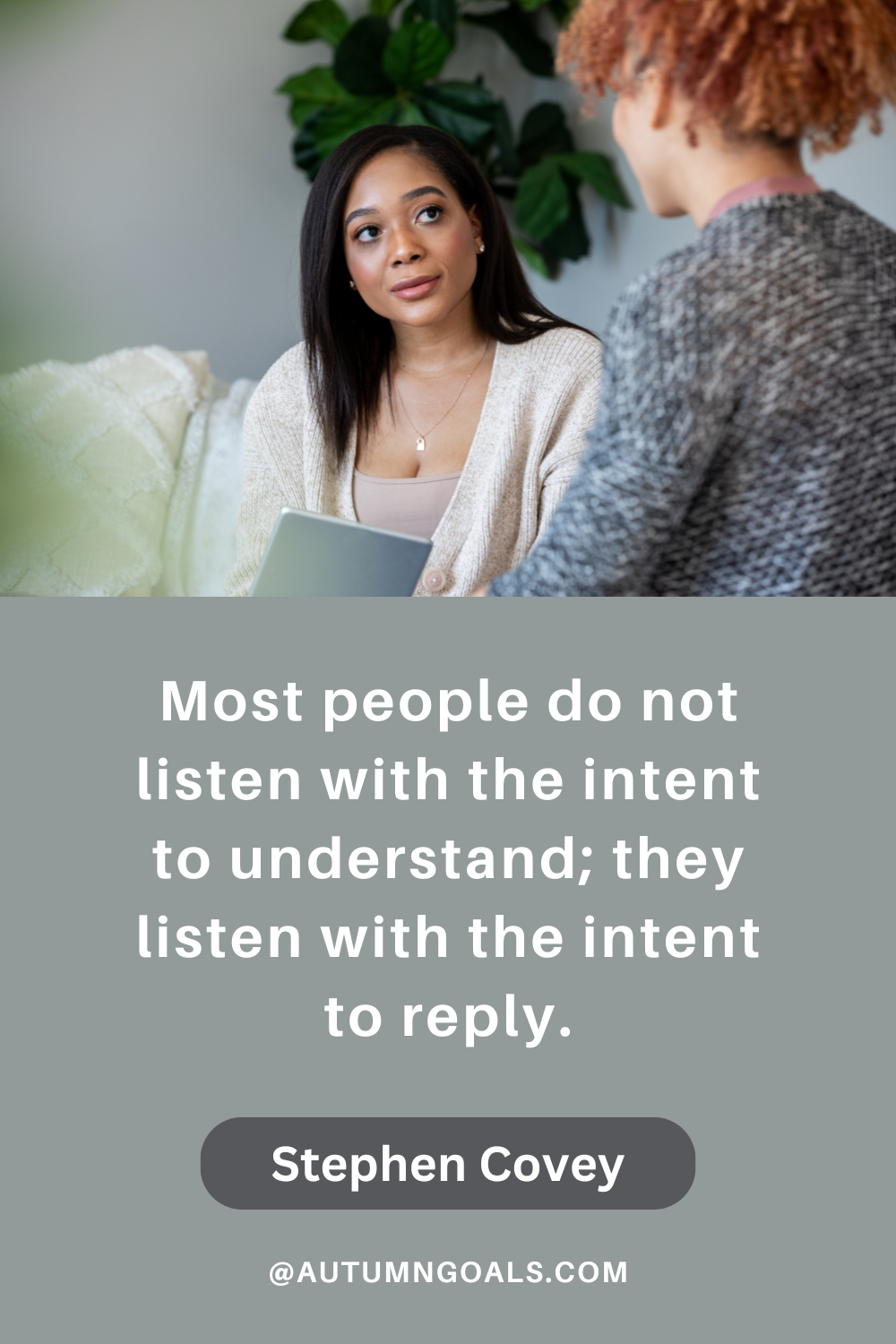How to Develop Empathy: Understanding and Connecting with Others
December 8, 2024 | by autumngoals.com

Photo by Transly Translation Agency on Unsplash
Empathy is the ability to understand and share the feelings of others. It’s more than just being kind or offering sympathy; it’s about truly stepping into another person’s shoes and seeing the world through their eyes. In today’s fast-paced, interconnected world, developing empathy is very important for meaningful relationships, effective communication, and personal growth. From improving workplace dynamics to building stronger bonds in personal relationships, empathy can positively impact our lives and the lives of those around us.
In this article, we will explore how to develop empathy different areas, providing actionable strategies to help you enhance this skill. Whether you are looking to improve your personal relationships or become more understanding in your professional life, empathy can open doors to deeper connections, stronger communities, and greater self-awareness.
What is Empathy?
Empathy involves more than just recognizing emotions—it’s about understanding another person’s experience and responding with compassion. According to Brené Brown, a renowned researcher on vulnerability and empathy, “Empathy is feeling with people.” It’s a practice of emotional connection that creates understanding and builds trust. Developing empathy requires emotional awareness, perspective-taking, and active listening.
By cultivating empathy, we not only help others feel seen and heard but also create opportunities for our own emotional and personal growth. As we improve our empathetic abilities, we become better at managing conflicts, understanding diverse perspectives, and strengthening our relationships.

Active Listening: The Foundation of Empathy
The first step to developing empathy is learning how to listen—not just with your ears but with your whole self. Active listening means being fully present in the conversation, without distractions or judgments. It’s important to show genuine interest in what the other person is saying and to reflect back their emotions and concerns.
How to Practice Active Listening:
- Make eye contact and focus on the speaker.
- Avoid interrupting or thinking about your response while they are talking.
- Show understanding by nodding, giving verbal acknowledgments, and asking clarifying questions.
- Paraphrase or summarize what they’ve said to confirm your understanding.
By engaging in active listening, you communicate to the other person that their feelings and perspectives matter. As Stephen Covey, author of The 7 Habits of Highly Effective People, famously said: “Most people do not listen with the intent to understand; they listen with the intent to reply.”

Cultivating Emotional Intelligence
Emotional intelligence (EI) is a key component of empathy. It involves recognizing, understanding, and managing your own emotions while also being aware of the emotions of others. High emotional intelligence allows you to navigate social complexities, respond to emotional cues, and build stronger relationships.
To develop emotional intelligence:
- Self-awareness: Reflect on your own emotions and how they affect your behavior.
- Self-regulation: Learn to manage your emotional reactions in a healthy way, especially during conflicts.
- Empathy: Tune into the emotional states of others and respond appropriately.
Daniel Goleman, a psychologist known for popularizing emotional intelligence, explained, “Empathy represents the foundation skill for all the social competencies important for work.” Empathy allows you to respond with understanding rather than judgment, creating deeper emotional connections.

Putting Yourself in Someone Else’s Shoes
One of the best ways to develop empathy is to practice perspective-taking. This means imagining yourself in someone else’s situation, trying to understand their emotions, thoughts, and challenges. By putting yourself in their shoes, you begin to see the world from their point of view, which helps bridge emotional and cognitive gaps.
How to practice perspective-taking:
- Ask yourself how you would feel in the other person’s situation.
- Consider their background, experiences, and possible challenges.
- Avoid making assumptions or jumping to conclusions about their emotions or actions.
As Atticus Finch, the iconic character in Harper Lee’s To Kill a Mockingbird, advised, “You never really understand a person until you consider things from his point of view—until you climb into his skin and walk around in it.” This exercise in empathy leads to greater understanding and compassion for others.

Validating Emotions and Offering Compassion
Validation is a critical aspect of empathy. It involves acknowledging and affirming another person’s feelings without judgment. When we validate someone’s emotions, we convey that their feelings are real and worthy of attention, regardless of whether we agree with their perspective.
How to validate emotions:
- Acknowledge the other person’s feelings with phrases like “I can see why you would feel that way.”
- Avoid minimizing or dismissing their emotions, even if they seem irrational.
- Offer support and understanding, showing that their emotions are respected.
Compassion often follows validation. It’s the action that comes from empathy—offering a helping hand, providing comfort, or simply being present with someone in their time of need. As Maya Angelou once said, “I think we all have empathy. We may not have enough courage to display it.”

Overcoming Biases and Prejudices
One of the biggest barriers to empathy is our own biases and prejudices. These mental shortcuts can cause us to make assumptions or judgments about people based on stereotypes or limited information. To develop true empathy, we must work to recognize and challenge these biases.
How to overcome biases:
- Reflect on your own assumptions and stereotypes about certain groups or individuals.
- Seek out diverse perspectives and experiences, both in your personal life and through media, literature, and conversations.
- Approach interactions with an open mind, allowing yourself to learn and grow.
Recognizing our biases is an essential step toward understanding others on a deeper level. As we challenge our preconceptions, we open the door to more authentic empathy.
Practicing Empathy in Everyday Life
Empathy is a skill that can be developed through consistent practice. The more you intentionally engage in empathetic behaviours, the more natural and automatic it will become.
Ways to practice empathy:
- Daily interactions: Make an effort to listen actively, validate emotions, and show compassion in your everyday conversations.
- Community involvement: Volunteering or participating in community projects can expose you to diverse perspectives and foster empathy for others.
- Mindfulness and reflection: Regularly reflect on your interactions with others and how empathetic you were. Use these reflections to identify areas for improvement.
By practicing empathy in small, everyday moments, you can build stronger relationships and become more emotionally connected to those around you.
Empathy in Leadership and Professional Life
Empathy is not just a personal skill—it’s also essential in leadership and professional environments. Leaders who demonstrate empathy are better able to understand the needs of their team members, resolve conflicts, and foster a collaborative work culture.
To apply empathy in leadership:
- Listen to employees’ concerns and challenges without immediate judgment.
- Show flexibility and understanding when team members face personal or professional difficulties.
- Recognize and appreciate the emotions behind workplace issues, and respond with compassion.
Empathetic leaders create environments where employees feel valued and understood. As Simon Sinek, leadership expert and author of Leaders Eat Last, said, “Empathy is about being concerned about the human being, not just their output.”

Empathy is a Choice
Developing empathy is not only about building better relationships with others but also about cultivating self-awareness and emotional intelligence. By listening actively, validating emotions, challenging biases, and practicing empathy in everyday life, we can improve our ability to connect with others on a deeper level. As we become more empathetic, we open the door to greater personal growth, resilience, and understanding in a world that deeply needs compassion.
Empathy enriches our lives, creating meaningful connections that enhance both personal and professional relationships. As Brené Brown wisely put it, “Empathy is a choice, and it’s a vulnerable choice.” As we make that choice every day, we build a more connected, compassionate, and understanding world—one interaction at a time.

RELATED POSTS
View all



